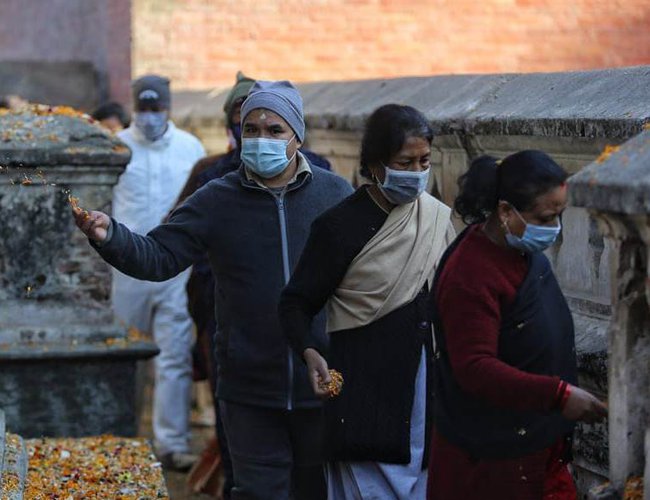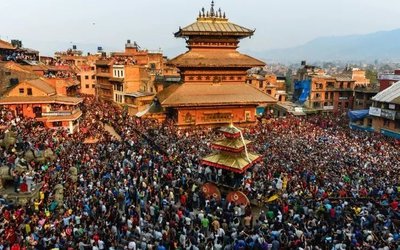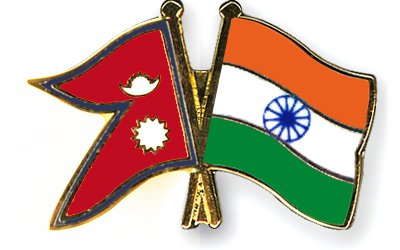
Devotees from across Nepal will observe Bala Chaturdashi on December 3 The day is also called satbij chharne din. A day before Bala Chaturdashi thousands of devotees used to campaign outside Pashupati Temple and other Shiva Temple from early in the morning of November 30.
Bala Chaturdashi, often called Bala Cha: re is one trivial event but it has an essential place in our lives. It is also called the day of sowing Satbij. In the Nepalese term, it is pronounced as Satbij charne din, where the seven kinds of grains are mixed and sowed to the jungles of Sleshmantak.
The Bala Chaturdashi generally lies on the month of Mangsir i.e, the starting of the winter season in Nepal. To participate in this ceremony or the event of sowing satbij, one must bathe on the Bagmati river early in the morning. Only after one would be qualified to sow seeds
The day is also called satbij chharne din. Camping under the open sky or tents arranged by the Pashupati Area Development Trust, the bereaved ones observe penance, light oil lamps and keep themselves awake throughout the night, praying for the departed souls to rest in heaven a day before Bala Chaturdashi.
Bala Chaturdashi or Satbij Charni Ausi is observed at Sleshmantak forest. Sleshmantak forest is situated to the other side across the Bagmati river by the Pashupatinath Temple.
Bala Chaturdashi or Satbij Charni Ausi is observed at Sleshmantak forest. Sleshmantak forest is situated to the other side across the Bagmati river by the Pashupatinath Temple.
One fun fact about the Bala Chaturdashi
Sleshmantak Ban or the jungle is contemplated as one of the holiest jungles of Nepal, which lies nearby in the complex of the temple of Pasupatinath. There is even an interesting story related to the beginning of this kind of liveliness, which is explained in the following topic.
Hereabouts, the day is very important for those who recently or within a year lost their family members or relatives. This event has the same importance and affection as in the Matathirtha Aausi or in the Kushe Aushi.
The only difference between that this day contains is that it doesn’t consider one specific member of the family to be rescued in heaven as in the other two major aausi. Instead, they all prayed for the proper departure of all the restless souls to heaven.
When is Bala Chaturdashi
This year Bala Chaturdashi is on 30 November 2024.
People from various places of Nepal and Hindus from other South Asian countries gather at the Pashupatinath temple. Pashupati Nath is the most sacred temple of Lord Shiva situated at the bank of the holy Bagmati River in Kathmandu.
Bala Chaturdasi
बाला चतुर्दशी
सुवर्ण रक्तिका तुल्यं ब्रीहिमेकं परिक्षिपेत .
मिर्गस्थालीं परिभ्रम्य पुनर्जन्म न बिध्यते
पूज्यत्पशूपं देवं गुहेशीं परमेश्वोरीं
वाशुकीं नागरजेन्द्रं तद्हीने पूजनं चरेत
How do we observe Bala Chataurdashi
We light traditional oil lamps (diyo) and recite mantras. We keep ourselves awake all night to ensure that the lamp keeps burning. We chant mantras, sing Bhajans and dance through night paying honor to Lord Shiva. The next day at daybreak we go to the holy Bagmati River for ritual bathing. Bagmati is considered to be the holiest river for all Nepali. Taking a dip three times into Bagmati River is considered a path to purification.
Diyo
After bathing in the Baghmati River pilgrims visits and worships almost all of the temples and idols in and around Pashupatinath as much they can. The devotees pass dropping the satbij, the mixture of seven sacred seeds in these temples and the 108 Shiva Linga present in the vicinity of Pashupatinath Temple. All walk through the same path followed for many years. It passes through Kailash forest and return back to the Pashupatinath temple.
The end part of Satbij dropping ceremony is done for fun after long walk and rituals. Lord Ganesh’s idol present near the Bishwaroop temple is believed to be deaf; people shake him and scream and shout in the ear to wake him up. This adds a fun flavor to the whole ceremony.
Why is Bala Chaturdashi Observed
Seeds are dropped in remembrance of dead beloved ones. It is believed by performing Bala Chaturdashi rituals we can secure a better place in heaven for the dead relatives. It is also believed that this helps settle the restless souls of departed ones who were not properly burnt. This is true that when thousands of people pray for the same consideration, that will be fulfilled.
Slesmantak forest, where the satbij is dropped is mentioned in Shiva Puran Mirgasthali as the place where lord Shiva dwelled as Deer. This place is hence considered a very sacred place and hence a drop of seed in this place is equal to a Ratti of gold (which is about 0.121 grams).
Story Behind Bala Chaturdashi
Bala Nanda, a trader, came to Arya Ghat (where people are cremated through burning), to attend funeral of one of his relatives. Bala Nanda sitting nearby and eating the ceremonial food, a small portion of the dead body popped out from the fire into his plate. He unknowingly swallowed the flesh of the dead body that fell into his plate. Soon he swallowed the flesh he transformed into a horrible demon with having silver head. He became a cannibal (man-eating human meat). Bala Nanda suddenly grabbed out a dead body from the fire and started eating it. People were terrified and ran away.
Then onwards he is called Balsur. Asur means Demon. (Bala+Asur=Balasur). Arya Ghat then became the favorite place for Balasur. People were scared to go to Arya Ghat to cremate dead relatives. People pleaded then king to solve the problem. King assigned Brisha Singh, very good friend of Balasur to kill him. Brisha manages to kill Balasur by betrayal.
Brisha felt guilty to deceive Bala. He went to meditation in the Sleshmantak Ban (forest) and enchanted Om and prayed to Lord Shiva for the rescue of his friend Balasur. Lord Shiva was pleased by his sincere affection for his friend. Lord Shiva helped in the salvation of Balasur. Lord Shiva also told Brisha to scatter sat bij, or seven varieties of grain, on the holy grounds of the Shlesmantak forest to cleanse the sin of Balasur and to erase his own guilt for killing a friend. From that day, the tradition of Dropping Seven Grains (Sat biu) started.
- India’s External Affairs Ministry’s Senior Officials Says Indo-Nepal relations are ever expanding
- Jul 05, 2025
- Bhutan Government Unveils Three Pronged Strategies To Tackle Skilled Migration Crisis
- Jul 05, 2025
- Weather Forecast: Generally Cloudy Across The Country With Heavy Rain At One Or Two Places Bagmati And Koshi Provinces
- Jul 05, 2025
- FNCCI President Dhakal Urges British Companies to Invest in Nepal
- Jul 04, 2025
- Nepal Is Expected To See 60,000 People Infected with Dengue This Year
- Jul 04, 2025















